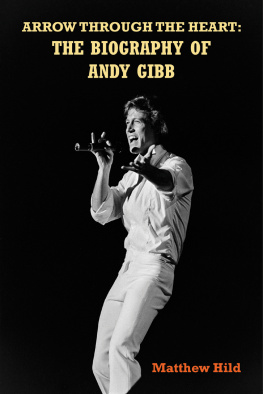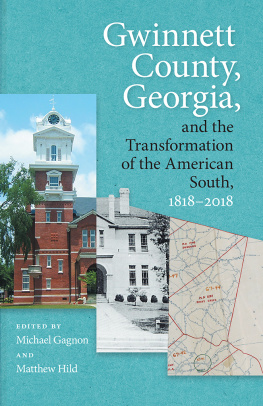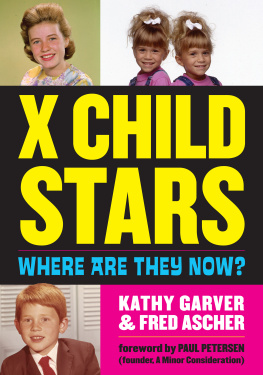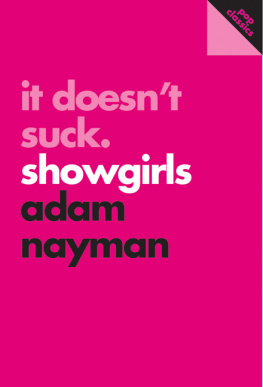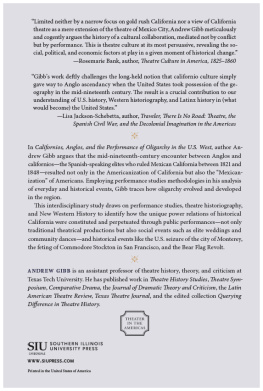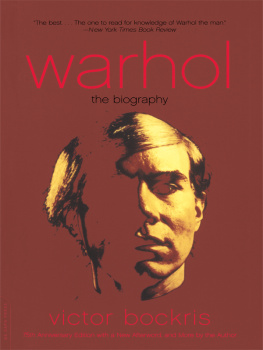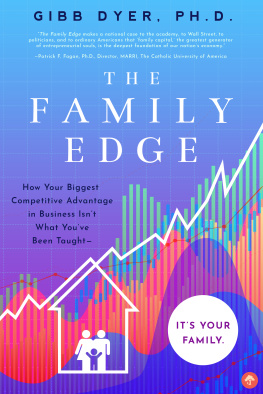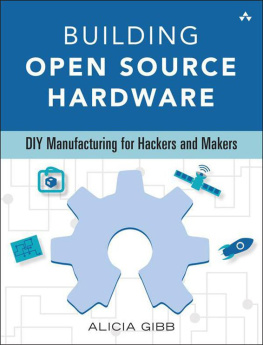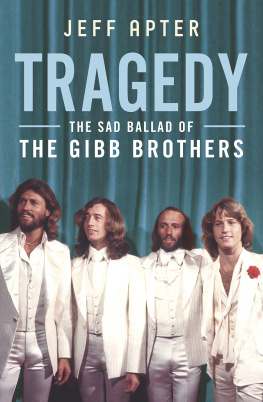

ARROW THROUGH THE HEART: THE BIOGRAPHY OF ANDY GIBB
Copyright 2022 Matthew Hild. All Rights Reserved.
No part of this book may be reproduced in any form or by any means, electronic, mechanical, digital, photocopying or recording, except for the inclusion in a review, without permission in writing from the publisher.
This book is an independent work of research and commentary and is not sponsored, authorized or endorsed by, or otherwise affiliated with, any motion picture studio or production company affiliated with the films discussed herein. All uses of the name, image, and likeness of any individuals, and all copyrights and trademarks referenced in this book, are for editorial purposes and are pursuant of the Fair Use Doctrine.
The views and opinions of individuals quoted in this book do not necessarily reflect those of the author.
The promotional photographs and publicity materials reproduced herein are in the authors private collection (unless noted otherwise). These images date from the original release of the films and were released to media outlets for publicity purposes.
Front cover photo: Andy Gibb performing at the Carlton Celebrity Dinner Theater in Bloomington, Minnesota, on November 11, 1983. Photo taken by Mike Zerby and used with the permission of the Minnesota Historical Society.
Back cover illustration: Painting of Andy Gibb by Chris Minoldi, 2021, provided courtesy of the artist
 | Published in the USA by
BearManor Media
1317 Edgewater Dr. #110
Orlando, FL 32804
www.BearManorMedia.com |
Softcover Edition
ISBN-10:
ISBN-13: 978-1-62933-920-7
Printed in the United States of America
Table of Contents
Acknowledgments
I could not have written this book if people who knew and worked with Andy Gibb had not been willing to share their memories with me. Many of them had never publicly shared those memories before, and I am grateful to them for finally doing so. Some filled in small bits of Andys story, while others knew him well and shared a lot of information and insights, but they all were helpful as I tried to piece together the story of his life and career.
In alphabetical order, I would like to thank: Marion Adriaensen, Howard Albert, Lenard Allen, Malcolm Balfour, Michael Barbiero, Russell Battelene, Peter Beckett, Dick Bright, Joey Carbone, Charlie Chalmers, James Dayley, Scott Glasel, Kenny Hodges, Bud Horowitz, Sarah Irvine, Ann Jillian, John Kozyak, Julie LaMagna, Peter Leinheiser, Jeff Lodin, Rick Lotempio, Jerry Manfredi, Tony Messina, Michael Miller, Andy Murcia, Joey Murcia, Olivia Newton-John, Trevor Norton, Bill Oakes, Scott Paton, Jim Photoglo, George Recupito, Kim Richards, Cathi Robbins, Rick Robbins, Nicole Romine, Pam Rossi, Joe Shane, George Terry, Chuck Throckmorton, Jeff Witjas, and Lenore Zann. Journalists Mick LaSalle, Joel Selvin, and Michele Willens also shared some memories and insights. Tai Babilonia and Wally Kurth also shared some recollections of Andy on Twitter.
Scott Paton kindly provided me with recordings of interviews that he conducted with Andy Gibb, Barry Gibb, Hugh and Barbara Gibb, and Karl Richardson and Albhy Galuten during 1977 and 1978 while he was working for the radio shows American Top 40 and The Robert W. Morgan Special of the Week. None of these interviews ever aired in their entirety. Kenny Hodges generously sent me a recording of an interview that he conducted with Andy on June 1, 1986, in Orem, Utah, when Andy was there to appear on the Childrens Miracle Network Telethon.
Thanks also to Michael Caprio, Andrew Curry, Jayjay Epega, Lesley Gibb Evans, Sheila Kennedy, Mara Fernanda Len, Michael McCartney, and Taylor Patterson. For assistance in finding the negative of the cover photo and obtaining permission to use the photo, thanks to Jennifer Huebscher, Jenny McElroy, Jennifer Wagner, John Wareham, the photographer Mike Zerby, and the Minnesota Historical Society. The portrait of Andy Gibb on the back cover was painted expressly for this book by Chris Minoldi, and I am grateful to him as well as Deborah Cristina and Tony Messina for their help in making that happen. Last but not least, I must thank Ben Ohmart and BearManor Media for believing in this book and publishing it.
Prologue
Mr. Gibb, can I have your photo?
The year was 1986, and as San Francisco Chronicle music journalist Joel Selvin recalled, Andy Gibb was in town for a weekend to serve as the grand marshal of a charity rally for the March of Dimes, an organization for which the singer made many charity appearances from the late 1970s through the mid-1980s. He had just walked out of an office at Kezar Stadium, surrounded by security officers. Andy shooed them aside, spread his arms out, and smiled for the photo.
The photographer quickly took the shot and then approached Andy. Here, this is for you, he said as he handed Andy some papers. Andy was puzzled. Whats that? Ive just served you, the photographer replied.
The photographer, H. Allen Gilstein, was not a member of the press. Gilstein was a private detective, acting, in this instance, as a process server. Andy was badly in debt, and many of his creditors had run out of patience. One of them had promised Gilstein $500 (equivalent to over $1,200 in 2021) if he managed to serve Andy. Hoping to seize the opportunity, Gilstein had phoned Selvin, who suggested the ruse that the private eye utilized. When Selvin arrived at his office on the following Monday, he found a magnum of champagne and a photograph of Andy Gibb on my desk.
This short but dramatic episode would have been unthinkable five years earlier. From 1977 to 1981, Andy Gibb, who made pop music history by reaching number one on the record charts with his first three singles, sold 20 million records, and when his popularity as a recording artist began to slip, he transitioned into television, hosting the popular syndicated musical variety series Solid Gold, and theater, landing a starring role on Broadway in Joseph and the Amazing Technicolor Dreamcoat in the fall of 1982. But just as a winning combination of attributeshis talent, charisma, boyish good looks, and the assistance of his brothers, the Bee Gees (especially Barry)propelled Andy to sudden superstardom at the age of nineteen, so did a perfect storm of demons cause a downfall that was almost as spectacular as his rise to the top. Andy was insecure about his success, believing that he owed much of it to Barry; he was tormented by not being able to see his only child, a daughter born in January 1978 out of a brief teenage marriage; and in an era when cocaine use was rampant among pop and rock stars, Andy often indulged. Finally, his much-publicized romance and, in March 1982, breakup with television star Victoria Principal sent him into a downward spiral. He lost his jobs on Solid Gold and Broadway due to missing too many shows.
By 1984 his career was floundering, and his addictions were damaging his health. He entered the Betty Ford Center in 1985, but he continued to struggle. In 1986 he sought treatment again, this time without the press coverage that had accompanied his first attempt at rehabilitation, at a clinic in Santa Barbara. He also joined Alcoholics Anonymous. Andy was now clean and sober and eager to rebuild his broken career, but he was so hopelessly in debt that he would have to declare bankruptcy before he could make any serious efforts to do that. In the fall of 1986 he returned to Miami Beach, which he had left for California six years earlier in a bid for independence from his brothers (particularly Barry), to try to get back on his feet.
Next page
